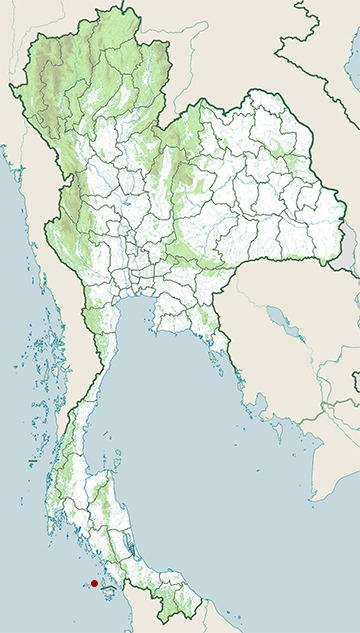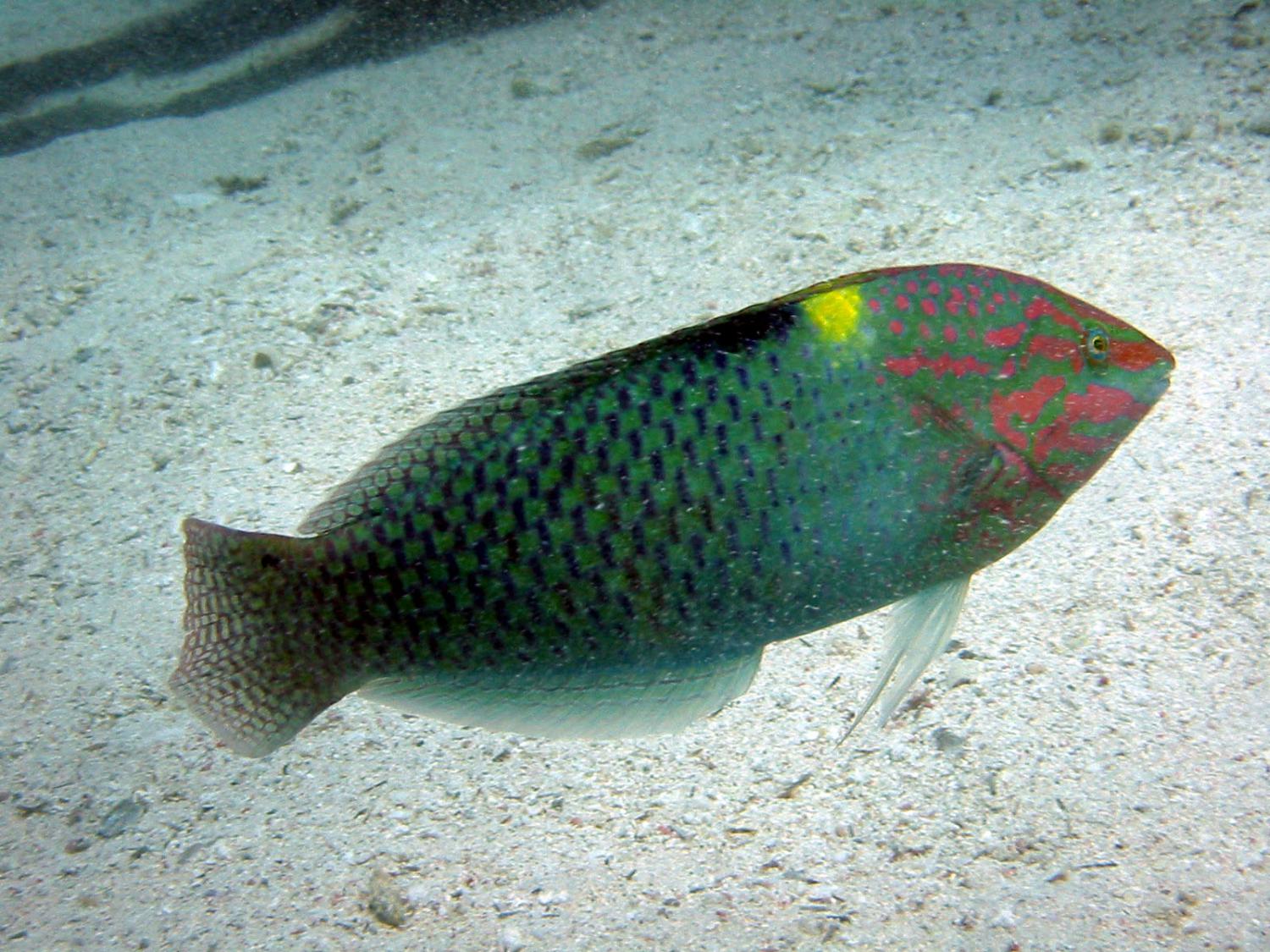Species of Thailand
Checkerboard wrasse
Halichoeres hortulanus
Bernard Germain de Lacépède, 1801
The checkerboard wrasse (Halichoeres hortulanus) is a fish belonging to the wrasse family. It is native to the area including the Indian Ocean to central Pacific Ocean.
Description
The checkerboard wrasse is a small sized fish that can reach a maximum length of 27 cm. Both its sex and appearance change during its life, and the colouring at each stage is rather variable based on location. The body is thin, relatively lengthened and its mouth is terminal.
At juvenile stage, this wrasse has a white silvery background color with three black and dark red vertical patchs from back head, middle of the body and on the caudal peduncle. A black ocellus with yellow ring adorns the rear of the dorsal fin, two distinctive white spots are also visible on top and bottom of the caudal peduncle. Also a reddish line passes through the eyes starting from tip of the snout.
In the terminal phase (after gender has been determined at maturity), there is a large variation of coloration. The checkerboard wrasse has a white to greenish background coloration with blue to black on the edge of its scales, reminiscent of a checkerboard pattern. The head is greenish with pink lines stretching to dots behind the eyes until the base of dorsal fin.
A bright yellow spot appears at the border of the side and the dorsal fin. Some color variation occur with a possible black spot just behind the characteristic first yellow spot, and a second bright yellow spot can be seen along the edge of the dorsal fin but at the end of this later. In the Red Sea, half the back of some individuals may be colored blue. The caudal fin is truncated and usually yellow with a pinkish pattern, which can be faded or completely blue.
Distribution and habitat
The checkerboard wrasse is widespread throughout the tropical and subtropical waters of the Indian Ocean, from the Red Sea to South Africa, to the oceanic islands (French Polynesia) from central Pacific Ocean. The northern limit is the south of Japan and the southern limit is the Great Barrier Reef.
It is usually found in clear lagoons and on seaward reefs at depths from 1 to 30 m.Juveniles are found at the bottom of surge channels or under ledges.
Biology
The checkerboard wrasse is a predator that feeds mainly on small invertebrates such as crustaceans, molluscs , worms , echinoderms captured on the substrate or in the sand.
Like many other wrasses, the checkerboard wrasse is a protogynous hermaphrodite, starting life as a female and later becoming a male, changing sex at maturity when it is about 12.8 cm long.
Conservation
This species is of minor importance to local commercial fisheries and it is targeted for the aquarium trade, but it is not thought to be a major threat. This species is listed as Least Concern on the IUCN Red List.
This article uses material from Wikipedia released under the Creative Commons Attribution-Share-Alike Licence 3.0. Eventual photos shown in this page may or may not be from Wikipedia, please see the license details for photos in photo by-lines.
Scientific classification
- Kingdom
- Animalia
- Phylum
- Chordata
- Class
- Actinopterygii
- Order
- Perciformes
- Family
- Labridae
- Genus
- Halichoeres
- Species
- Halichoeres hortulanus
Common names
- English:
- Checkerboard wrasse
- Four-spot wrasse
- Rainbowfish
- Wall wrasse
- Spanish: Lalo ajearezado
- French:
- Arc en ciel jaune
- Girelle
- Girelle échiquier
- Lalo damier
- Tamarin
Synonyms
- Hemitautoga centiquadrus, Bernard Germain de Lacépède (1801)
- Labrus hortulanus, Bernard Germain de Lacépède (1801)
- Labrus centiquadrus, Bernard Germain de Lacépède (1801)
- Halichoeres hortulanus centiquadrus, Bernard Germain de Lacépède (1801)
- Halichoeres hortulans, Bernard Germain de Lacépède (1801)
- Halichoeres centriquadrus, Bernard Germain de Lacépède (1801)
- Halichoeres centiquadrus, Bernard Germain de Lacépède (1801)
Conservation status

Least Concern (IUCN3.1)
Photos
Please help us review our species pages if wrong photos are used or any other details in the page is wrong. We can be reached via our contact us page.
Range Map

- Tarutao National Marine Park
